Are you caught in the midst of a decision dilemma, torn between Jira Service Management vs. TOPdesk as you search for the perfect IT Service Management (ITSM) platform for your organization? With the multitude of ITSM options available, finding the ideal fit that seamlessly aligns with your unique requirements can be a daunting task.
In this blog post, we'll embark on a comprehensive ITSM tools comparison of two prominent players in the field of ITSM: Jira Service Management and TOPdesk.
However, neither of these platfoms might fully meet your organization's specific requirements. That's why we'll introduce you to an alternative solution that could be the perfect match: InvGate Service Management. It is a robust service desk software solution designed to streamline service delivery and empower organizations to take their ITSM practices to new heights.
Let's begin the exploration and discover the ITSM platform that will revolutionize your organization's Service Management.
TL;DR
- Users highlight Jira Service Management's sprint planning and task assignment capabilities, as well as its ticketing system and end-user portal. However, they dislike the migration process, its limitations in reporting, a steep learning curve, and the reliance on additional plugins.
- In TOPdesk's case, customers like the collaboration capabilities and user-friendly interface, as well as its configuration and customization options. On the contrary, they don't like the challenges with Knowledge and Change Management, the complexity in setup and configuration, and the outdated appearance.
- InvGate Service Management's users highlight the tool's ease of use and modern UI, as well as its Low-Code/No-Code capabilities that simplify configuration. In addition, the platform offers a straightforward migration process and robust automation, reporting, and AI capabilities.
We tried to be as thorough as possible, but if you don't have enough time to read it through and through, here's (another) TL;DR: InvGate Service Management can do everything we say here, and you can test it right away for free for 30 days.
Most looked-at features by buyers
When evaluating IT Service Management solutions, potential buyers concentrate on specific features that match their organization's requirements. Understanding these desired functionalities is crucial for making well-informed decisions.
Now let's explore the main factors prospective buyers commonly consider when comparing ITSM tools.
- Self-service portal and knowledge base - Including a self-service portal is highly valued as it empowers end-users to independently resolve common issues and find relevant information without requiring direct assistance.
- Customization and adaptability - Buyers appreciate software solutions that can be personalized according to their business requirements. This ensures that the software aligns with their unique workflows and processes, resulting in higher user satisfaction and overall effectiveness.
- Streamlined IT service catalog - Organizations often need a simplified IT service catalog that provides a centralized platform for users to request specific IT services or resources. This feature simplifies service requests, enhances visibility, and aids in managing service delivery effectively.
- Ticket Management system - Prospective buyers place great importance on a comprehensive Ticket Management system offered by the help desk software. This feature allows for efficient tracking, assignment, and resolution of customer inquiries and support requests.
- Scalability and personalization - Organizations with evolving needs prioritize solutions that can adapt to their growth and allow customization. Buyers seek the ability to create custom fields, workflows, and extensions/plugins to meet their specific business requirements.
- Informative reporting - Buyers seek help desk software with powerful reporting tools such as dashboards and reports. These features offer valuable insights into IT operations and performance, facilitating informed decision-making and continuous service improvement.
- Seamless integration capabilities - The ability to integrate with other systems and applications is a critical requirement for buyers. They look for smooth data flow and automated processes, valuing the capability to integrate with existing tools and platforms (native integrations with ITAM tools come in here!) to improve efficiency and provide a unified user experience.
- Support automation and Workflow Management - Buyers actively seek software solutions that offer automation capabilities to streamline routine tasks such as ticket routing, approvals, and escalations. These automation features contribute to increased efficiency and productivity.
- Efficient IT Asset Management - Users prioritize software that offers robust IT Asset Management (ITAM) capabilities. This helps them maintain accurate inventories and optimize resource utilization within their organizations.
- User experience and interface - Ease of use and interface design are critical factors for buyers. They value a user-friendly platform with an intuitive interface that enhances user adoption and productivity. Mobile accessibility is also important for organizations with remote or mobile workforces.
- ITIL compliance - Adhering to ITIL best practices is a priority for many organizations. Buyers may prioritize solutions that support ITIL processes, including Incident Management, Problem Management, Change Management, and Asset Management.
- Cost and support - Buyers consider the cost-effectiveness of the solution, including licensing models, subscription plans, and additional costs for features or users. Reliable customer support, comprehensive documentation, and accessible training resources also influence decision-making.
What is Jira Service Management?

Jira Service Management is an IT Service Management platform created by Atlassian. It has a user-friendly interface and powerful features that enable businesses to optimize their service delivery and improve customer satisfaction. Currently, Jira Service Management is available as a cloud-based service, meaning organizations can take advantage of cloud computing benefits for their Service Management needs.
Atlassian, the company behind Jira, was founded in 2002 by Mike Cannon-Brookes and Scott Farquhar in Sydney, Australia. Over the years, the company has grown significantly and expanded its global presence by opening offices in different countries.
Atlassian specializes in developing software and tools for developers and project managers, including Confluence, Bitbucket, and Trello. These tools cater to various needs, such as Project Management, issue tracking, content collaboration, Code Management, and team facilitation.
What users like from Jira Service Management
Analysis conducted by reputable sources such as Gartner and G2 has reflected the positive feedback from Jira Service Management customers. Here are some key benefits recognized.
- Simplified sprint planning and task assignment - Jira Service Management seamlessly integrates with popular collaboration platforms such as Slack and Teams, making sprint planning and task assignment a streamlined process. The Kanban view serves as a centralized hub for managing tasks, while the tagging function allows for efficiently organizing project-specific tasks.
- Efficient ticketing system with customizable workflows - The ticketing system and customizable workflows simplify task management. It allows teams to track and prioritize tickets according to their unique requirements.
- Enhanced user portal for self-service and feedback - Jira Service Management's platform includes an improved user portal that enhances the self-service experience. The portal facilitates the self-assessment of incidents and requests, empowering users to resolve issues independently whenever possible. Additionally, users can rate the overall process upon issue resolution, providing valuable feedback that aids in continuous improvement and customer satisfaction efforts.
- Comprehensive task details and robust filtering capabilities - Users value complete task details, as it offers in-depth information about each task. This feature gives teams a holistic understanding of their work. Additionally, the platform offers powerful filtering capabilities, enabling users to search, sort, and organize tasks based on specific criteria, ultimately improving productivity.
- Intuitive and user-friendly interface - Users highly appreciate the platform's user-friendly interface, which improves incidents and requests management. The design promotes ease of use, enabling teams to navigate and interact with the system effortlessly.
- Flexible pricing options - Jira Service Management offers a range of flexible pricing options suitable for organizations of varying sizes and budgets. This includes a free plan suitable for small teams of up to three users with 2 GB of storage. The cloud-hosted option provides a reasonably priced base package.
What users don’t like from Jira Service Management
Despite its many strengths and positive attributes, Jira Service Management has faced some user criticisms and concerns. Here are some of the recurring criticisms revealed through analysis from sources like Gartner and G2.
- Challenging migration process - Users have raised concerns about the complexity of transitioning to Jira Service Management's projects. Some users have encountered difficulties that may require a separate user subscription, making the migration process cumbersome.
- Limitations in task tracking and reporting - Users have encountered limitations in task tracking and reporting, hindering their ability to monitor and analyze project progress and performance. This includes challenges when tracking multiple tasks, generating comprehensive reports, and creating customized dashboards within the platform.
- Steep learning curve - The platform's robust capabilities and extensive functionalities can make it difficult for users to navigate and utilize the system and its features effectively. Some individuals may require additional guidance or training to overcome the steep learning curve.
- Limited and complex integrations - Users have expressed a desire for more readily available integrations and have had to develop custom solutions to connect Jira Service Management with specific tools. Integrating the platform with external systems can be challenging and time-consuming.
- Reliance on additional plugins - Users have expressed the need to depend on additional plugins to access basic features within the system. Moreover, complying with data protection regulations such as GDPR has posed challenges for some users.
- Less intuitive interface - Compared to alternative options, some users find Jira Service Management's interface less intuitive, particularly when it comes to external customers interacting with the platform.
- Issues with Atlassian support - Users have reported challenges when seeking assistance from Atlassian support. They have experienced difficulties in obtaining the necessary support and guidance, which can impact their overall experience.
What’s Jira Service Management’s argument over TOPdesk?
When comparing Jira Service Management and TOPdesk, Jira Service Management presents a compelling argument in several areas.
- Seamless integration with collaboration platforms - Jira Service Management excels in seamlessly integrating with popular collaboration platforms like Slack and Teams, streamlining sprint planning and task assignment. This feature enhances team collaboration and communication, ensuring efficient workflow management.
- Customizable workflows - Jira Service Management offers a highly customizable ticketing system with customizable workflows, enabling teams to tailor their task management process according to their unique requirements. This flexibility ensures that teams can track and prioritize tickets effectively.
- Comprehensive task details and filtering capabilities - Jira Service Management's complete task details and robust filtering capabilities stand out. Users highly value the in-depth information Jira Service Management provides, allowing teams to gain a holistic understanding of their work. Additionally, the platform offers powerful filtering capabilities that enhance productivity.
What is TOPdesk?
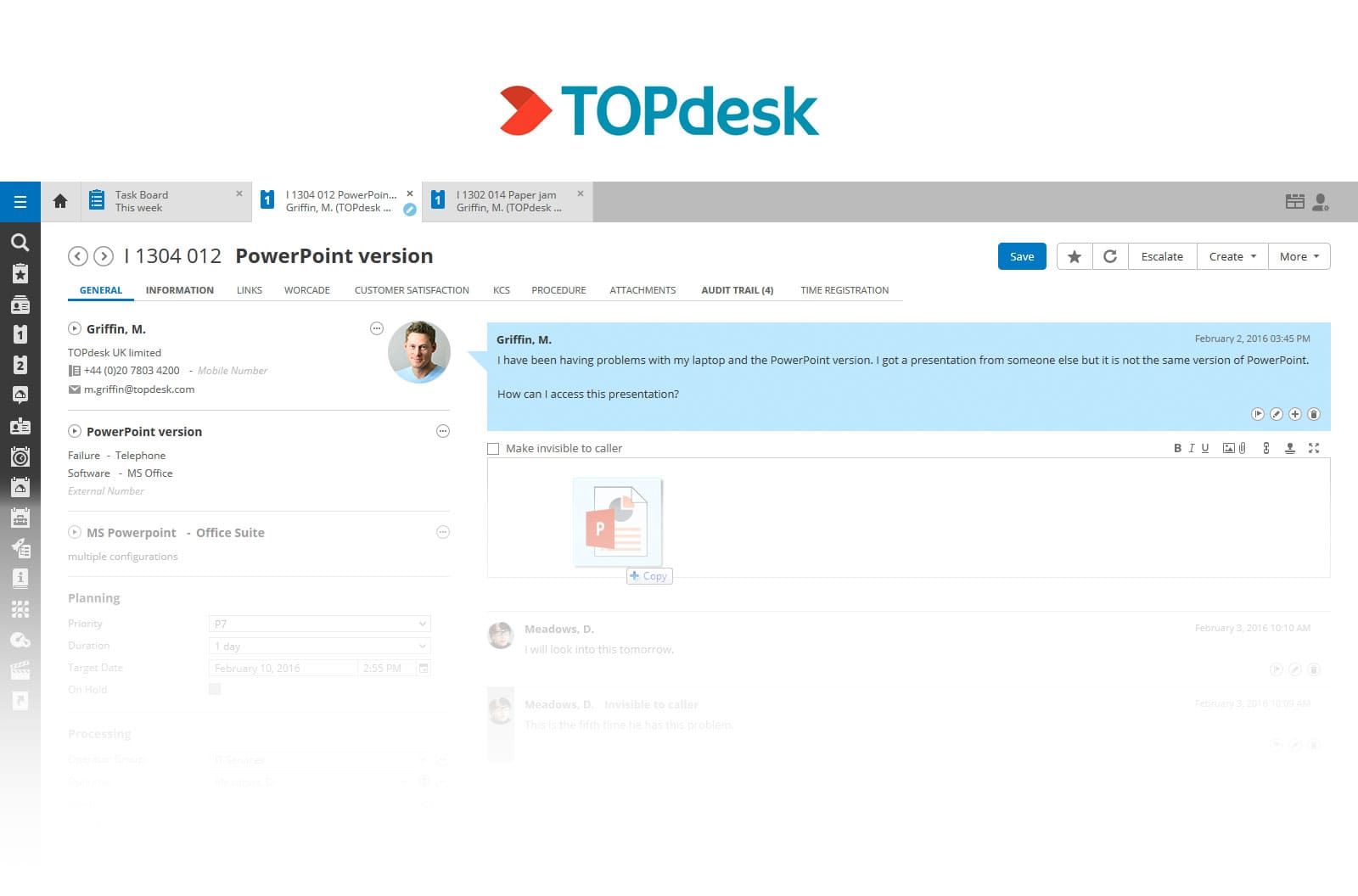
TOPdesk IT Service Management is a software product developed by TOPdesk, a Dutch software company. Its primary objective is to enhance the efficiency and effectiveness of IT support services. The platform combines customer requests, IT assets, and workflows into one easy-to-use system, making the support process simpler for IT agents and providing a satisfactory customer experience.
TOPdesk ITSM enables organizations to manage various IT service activities, including Incident Management, Problem Management, Change Management, and Request Management, in a productive manner.
What users like from TOPdesk
Positive user feedback and recognition by reputable sources like Gartner have highlighted the advantages of TOPdesk. Here are some key benefits.
- All-in-One Solution for Service Management - TOPdesk ITSM serves as a comprehensive and integrated platform, meeting organizations' IT service needs in one tool.
- Collaboration capabilities - The software promotes seamless communication and efficient troubleshooting through collaboration features, fostering collaboration among operators and departments.
- User-Friendly interface - TOPdesk ITSM offers an interface that is easy to use and navigate, allowing IT agents to complete tasks effortlessly.
- Versatility and integration - The platform seamlessly integrates with other tools, enhancing its functionality and making it valuable for any IT department.
- Stability and reliability - The software ensures stability and reliability, guaranteeing uninterrupted delivery of IT services.
- Configuration and customization options - TOPdesk ITSM offers high configuration and customization options, empowering organizations to tailor the software to their specific needs.
- Powerful engine and dynamic features - The software is equipped with a powerful engine and dynamic features, enabling efficient and effective IT Service Management.
- API capabilities for automation and integration - The platform provides API capabilities that enable automation and seamless integration with other systems, streamlining ITSM processes.
- User-friendly self-service portal - The self-service portal is designed with user-friendliness in mind, allowing customers to request assistance or report issues easily.
- Responsive customer support - TOPdesk provides prompt and helpful customer support, ensuring that issues or concerns are quickly addressed with efficient response times.
- Information provisioning - TOPdesk keeps organizations informed about new features, ensuring they stay up-to-date with the latest developments.
- Asset and Inventory Management - TOPdesk includes comprehensive ITAM functionality and Inventory Management, offering a holistic view of assets.
What users don’t like from TOPdesk
However, there are certain areas of concern and dislikes raised by users.
- Lack of flexibility in personal and group settings - The personal and group settings in the software lack flexibility, limiting user customization options.
- Functionality and usability improvements needed - Certain software modules require further development to address user feedback and enhance overall performance.
- Challenges with Knowledge Management and Change Management Systems - Some users have encountered issues with these systems, indicating the need for further development.
- Complexity in setup and configuration - Some users find it difficult to set up and configure specific functionalities, leading to frustrating experiences that would benefit from streamlined processes.
- Outdated appearance - Users have expressed dissatisfaction with the outdated look and feel of TOPdesk, suggesting a modernized design would enhance the user experience.
- Limited reporting capabilities - The reporting capabilities of TOPdesk are currently limited, making it challenging to extract valuable insights and data.
- Challenges with email triggers - Users have reported difficulties in creating email triggers based on workflows, resulting in communication delays.
- Inconvenient task separation - Separating tasks across different modules can be problematic and confusing for users, suggesting a need for simplification and streamlining.
- Slow release of updates for Asset Management - The release of updates for Asset Management has been slow, limiting users' ability to benefit from the latest developments.
- Front-End aesthetics and customization issues - Some users have faced challenges with front-end aesthetics and customization options, negatively impacting user experience.
- Implementation delays and consulting service issues - Certain users have experienced delays in implementation and encountered problems with consulting services, affecting software adoption.
- Improvement needed in reporting and dashboard options - Users desire improved reporting and dashboard options to gain more valuable insights and data, enhancing analytical capabilities.
- Missed features compared to competitors - Users have noticed missing features or functionalities in TOPdesk, impacting its competitiveness in the market.
What’s TOPdesk’s argument over Jira Service Management?
When comparing TOPdesk with Jira Service Management, TOPdesk presents a compelling argument in several areas.
- All-in-one solution for Service Management - TOPdesk offers a comprehensive and integrated platform that caters to various ITSM needs in one tool. With TOPdesk, organizations can streamline their service management processes, including Incident Management, Problem Management, Change Management, and more. This eliminates the need for multiple tools or disjointed systems, providing a unified solution that simplifies IT service delivery.
- Collaboration capabilities - TOPdesk offers collaboration capabilities that promote seamless communication and efficient troubleshooting among operators and departments.
- Configuration and customization options - TOPdesk offers high configuration and customization options, empowering organizations to tailor the software to their specific needs and workflows.
- Stability and reliability - TOPdesk prides itself on providing a stable and reliable software solution, ensuring uninterrupted delivery of IT services.
Considering InvGate Service Management as an ITSM solution alternative

While Jira Service Management and TOPdesk are well-known competitors in the ITSM industry, it's crucial to explore alternative solutions that closely align with your organization's specific needs. In this regard, InvGate Service Management stands out as a compelling option that deserves careful consideration.
Now, let's delve into the comprehensive features of InvGate Service Management that make it a valuable choice for meeting your organization's ITSM requirements.
Simplified configuration and setup
InvGate Service Management provides a streamlined configuration and setup process using a user-friendly no-code/low-code approach. This simplifies implementation and enables both new and experienced users to leverage its powerful ITSM capabilities without extensive technical expertise.
Exceptional user experience
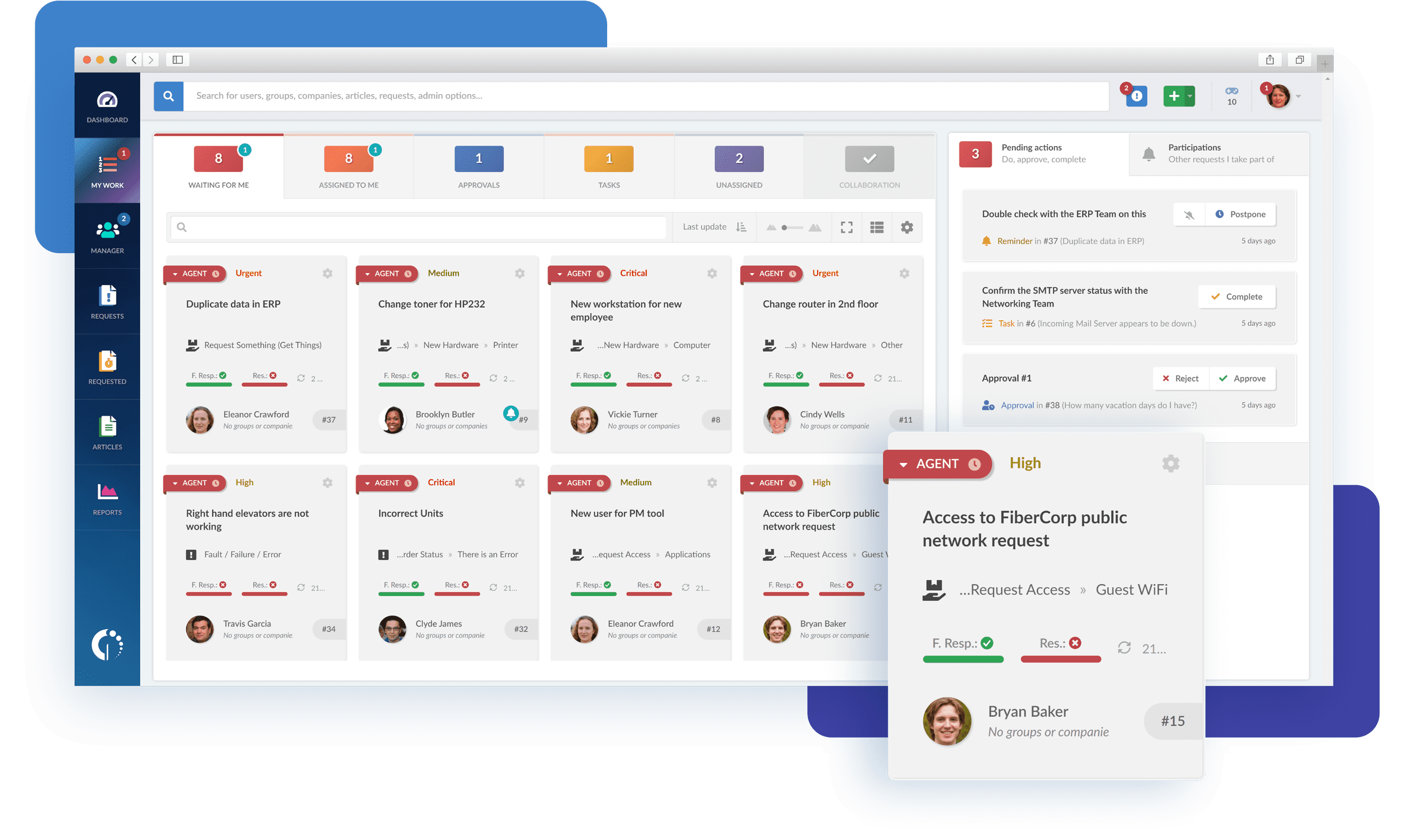
InvGate Service Management places a strong emphasis on delivering an exceptional user experience through careful design and adherence to UI/UX best practices. Its intuitive interface promotes quick adoption, minimizing the need for extensive training and maximizing productivity.
Powerful Ticketing and Incident Management
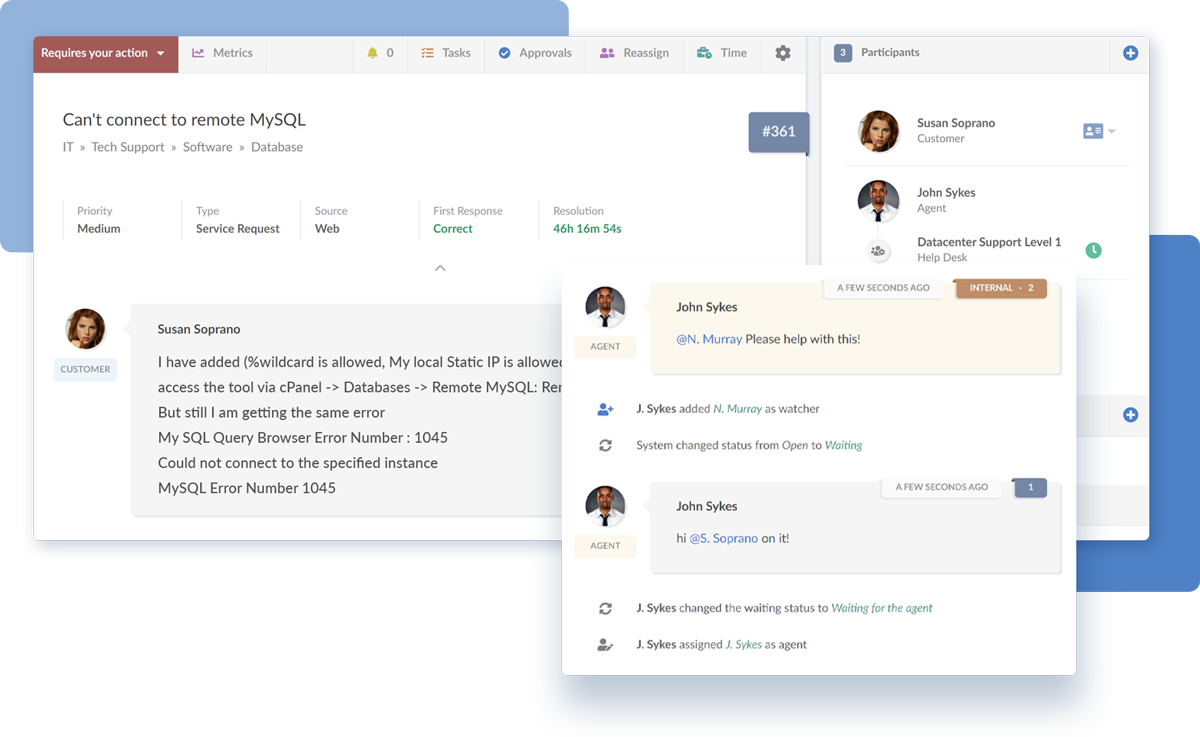
InvGate Service Management offers robust features for efficiently tracking, collaborating, and resolving tickets. With automated ticket routing, customizable workflows, and SLA Management, IT teams can effectively handle and prioritize incidents.
ITIL best practice adherence
InvGate Service Management has obtained the esteemed PinkVERIFY Certified certification, demonstrating its commitment to upholding ITSM excellence. Whether organizations are starting their ITIL journey or managing complex operations, InvGate Service Management offers a user-friendly and feature-rich experience aligned with industry best practices.
Customization and flexibility
InvGate Service Management offers flexible deployment options, allowing organizations to choose between on-premise or cloud-based solutions. This adaptability ensures that the platform can cater to the specific requirements of different sectors and industries.
Strong self-service capabilities
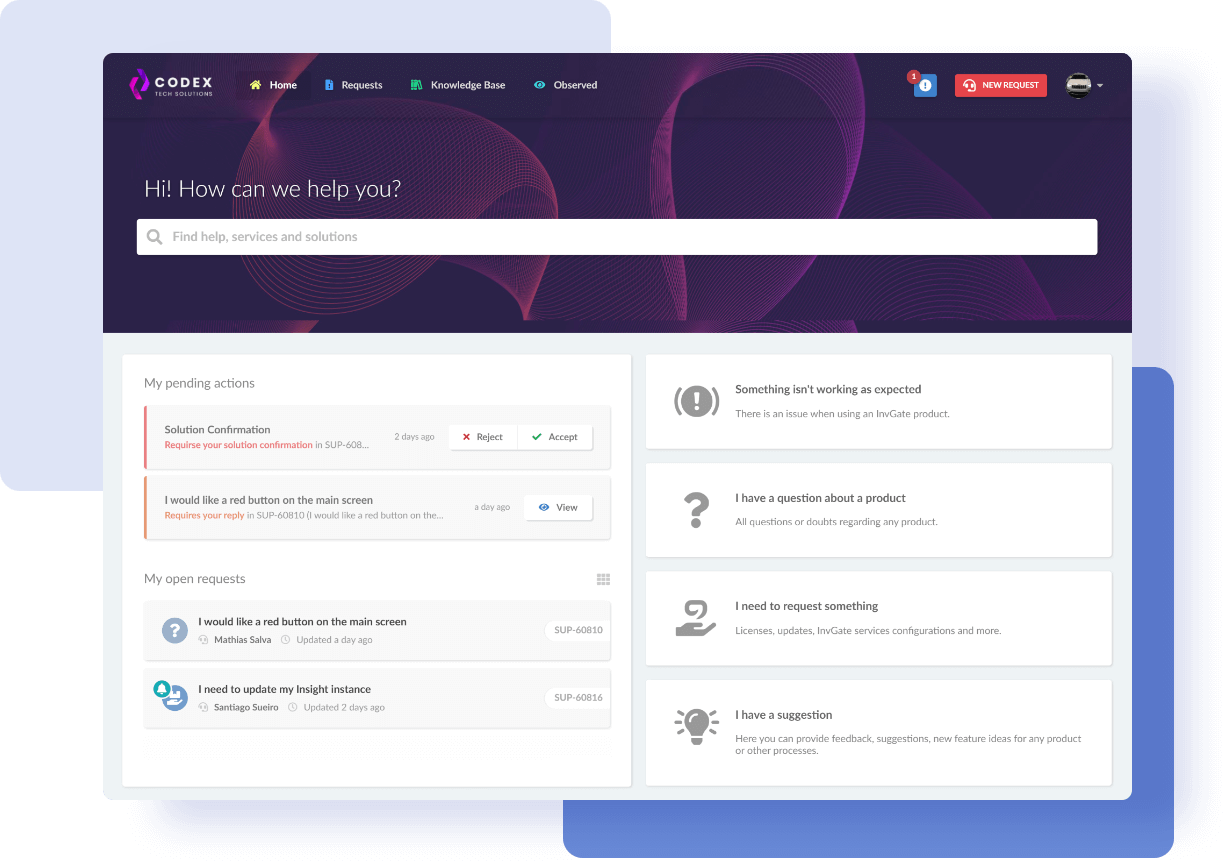
InvGate Service Management offers robust self-service functionalities, including a user-friendly portal, an extensive IT service catalog, and a knowledge base. These features empower end-users to independently resolve common issues, access various IT services, and utilize self-help resources, reducing the workload on IT staff.
Comprehensive Asset Management
By integrating with InvGate Asset Management, InvGate Service Management provides a comprehensive view of an organization's IT ecosystem, resulting in improved service delivery and reduced downtime. InvGate Asset Management offers features such as IT Asset Discovery, Inventory Management, Software License Management, and maintenance schedules.
Cost-effective solution
InvGate Service Management delivers a cost-effective solution without compromising functionality. It offers a comprehensive range of ITSM features at a competitive price point, making it an appealing choice for organizations seeking affordability without sacrificing capabilities. Compared to alternatives like Jira Service Management and TOPdesk, InvGate Service Management strikes a balance between cost and functionality.
Fast ROI and ongoing innovation
InvGate Service Management ensures a fast return on investment through efficient implementation processes. Within weeks, organizations can start reaping the benefits of this robust ITSM solution. Additionally, regular feature updates keep users at the forefront of technology without incurring additional costs.
Focused on ITSM with ESM extension
InvGate Service Management is purpose-built for ITSM and seamlessly extends its capabilities to Enterprise Service Management (ESM). This enables operational departments to enhance their processes and fully embrace the benefits of digital transformation. With a primary focus on ITSM and strong performance in ESM, InvGate Service Management facilitates streamlined workflows and comprehensive digital transformation initiatives across all departments.
Comprehensive reporting and analytics
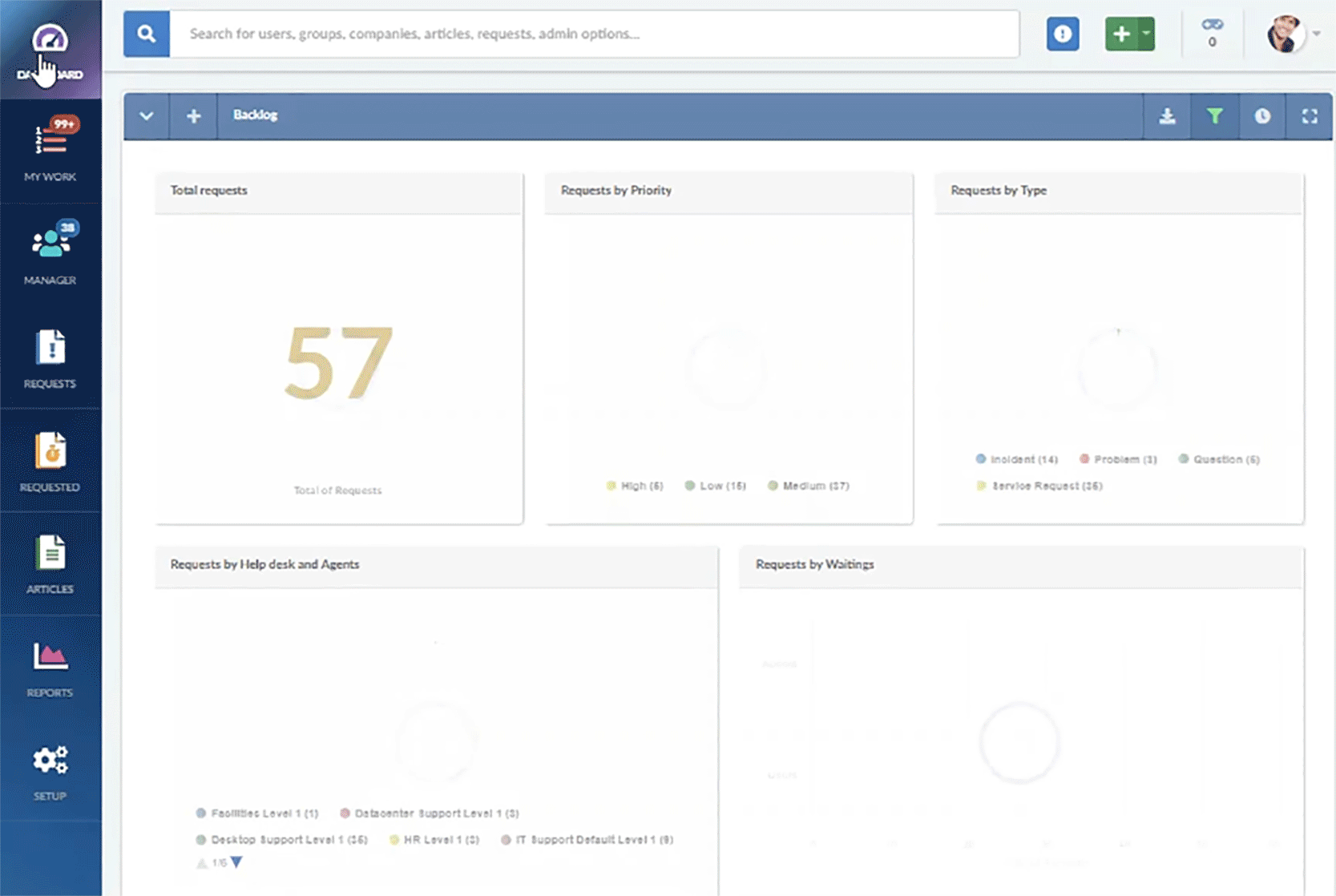
InvGate Service Management provides extensive reporting and analytics functionalities, empowering organizations to gain valuable insights into their IT operations and performance. The platform offers ready-to-use reports and customizable dashboards, enabling IT teams to analyze data, identify patterns, and make informed decisions to enhance their services.
Next steps
As organizations evaluate ITSM solutions like Jira Service Management vs. TOPdesk, it becomes evident that exploring alternative options tailored to their unique needs is crucial. In this comparison, InvGate Service Management stands out as a compelling contender, offering streamlined functionalities and robust features that can enhance IT services and drive digital transformation.
To fully grasp the transformative capabilities of InvGate Service Management, request our 30-day free trial. See how this solution can optimize your IT services and support a future-proof ITSM strategy!
















